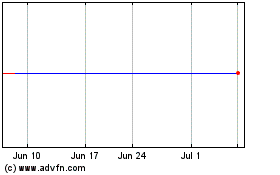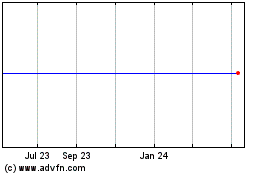When markets start tumbling, investors often turn to hedging
strategies for protection. And thanks to the rise of ETFs over the
past few years, many look to these funds as an easy, liquid way to
buy some peace of mind.
While there is a plethora of options in the inverse and short
ETF market, many investors have zeroed in on volatility ETFs and
ETNs as their go-to hedging tools. That is because these products
generally move higher when markets are slumping, or when fear
levels are high about the future.
Furthermore, their gains tend to be pretty big when markets are
down, with moves of 4% in a single session not out of the ordinary.
Volatility products also allow investors to avoid the rebalancing
issues that can impact leveraged ETFs, another reason for their
popularity among all stripes of investors (see Volatility ETFs:
Three Factors Investors Must Know).
Yet, despite these positives, volatility ETFs and ETNs are
actually pretty terrible investments for almost everyone out there.
There are a number of issues that make these types of funds and
ETNs quite poor over medium and long time frames, suggesting that
these should be avoided by all except extremely short-term
traders.
Inside Volatility ETFs and ETNs
First, it may be useful to point out how these products are
constructed in order to get a better idea of the asset class and
how they work. Let’s focus on the most popular volatility ETN on
the market, the iPath S&P 500 VIX Short-Term Futures
ETN (VXX).
This note has over $1 billion in assets under management, and
sees a truly impressive volume level of over 40 million shares a
day. Still, the product is a bit pricey compared to some low cost
index funds in the market, charging investors 89 basis points a
year in fees.
This ETN, like many other popular volatility products on the
market, focuses on the S&P 500 VIX Short-Term Futures Index,
better known simply as the VIX, for its exposure. However, this
index isn’t exactly easy to understand, as it measures the 30-Day
expected volatility of the S&P 500 Index.
The easiest way of looking at the benchmark is that it focuses
on near and next-term put and call options on the S&P 500. One
could write a whole series of articles on the subject, but the most
important item to remember is that the VIX represents the expected
movement of the S&P 500 over the next month.
Contango: The enemy of volatility
Based on the above explanation, you might think that a bet on a
product like VXX is just simply a prediction that the S&P 500
will be more volatile in the near future, or that at least put/call
demand will reflect a broad market assumption of volatility in the
coming days and weeks. While this is generally correct, for the
volatility ETF and ETN world, there is an important factor that
needs to be added on top of this; contango.
Most of the time, the VIX futures market trades in a condition
known as ‘contango’, a situation where contracts further along the
futures curve are more expensive than front month contracts. This
trend can have an enormous impact on volatility ETFs and ETNs, as
it can eat away at returns over longer time periods.
That is because volatility ETFs and ETNs like VXX must roll from
month to month in order to get new contracts and avoid ‘delivery’.
But since the next month contracts are more expensive than current
ones, VXX investors face a loss every roll period that the product
is in contango (see The Three Biggest Mistakes of ETF
Investing).
In fact, current contango levels show that the next month
contract is more than 5% pricier than the current month, a pretty
big hurdle to overcome on a monthly basis!
This can lead to truly devastating returns over long time
periods, and make it all but impossible to make money in volatility
investing over the long haul. After all, thanks to this roll
feature, VXX is down over 80% while the spot VIX
has lost just over 15% of its value in the trailing two year time
frame.

Caveat to Volatility ETF investing
This isn’t to say that volatility products can’t be used
effectively and for huge gains. Right before the fiscal cliff deal
was announced, VIX-based products were surging higher generating
massive profits for those who got in at the right time.
In VXX from December 17th 2012 to December
28th 2012, gains came in at about 21% for the time
period, while 2x leveraged versions of the product like
UVXY or TVIX added more than 40%
in the same time frame. These performances obviously crushed broad
markets in a similar period, and helped to give some investors a
nice end-of-year boost.
However, as quickly as these gains materialized, they
disappeared for many investors. From December 31st
2012 to January 4th 2013, VXX slumped by about 20% and
the leveraged ones lost about 40%, erasing any gains that investors
had seen in the runup.
Clearly, near perfect timing is needed in these types of
products as gains can apparently evaporate overnight (see Use VIX
ETPs to Profit from Market Volatility).

A Better Way to Play Volatility?
Fortunately, there are a couple ways that investors can take
advantage of the curve in the volatility market, and harness it for
positive purposes. There are actually a number of volatility
products out there that target the inverse volatility market for
exposure.
These products, such as the ProShares Short VIX
Short-Term Futures ETF (SVXY), the VelocityShares
Daily Inverse VIX Short Term ETN (XIV), and the
VelocityShares Daily Inverse VIX Medium Term ETN
(ZIV), all seek to take advantage of the contangoed curve
and add each month the VIX is facing this situation.
While some might discount this as a poor play, the proof is in
the performance of these products over the past few months as XIV
and SVXY are both up about 80% over the past year, while ZIV has
moved higher by over 90% in the time frame. Meanwhile, during the
calendar year of 2012, the inverse volatility ETFs were the best
performers in the ETF world—bar none—for the year (read Inside the
Two ETFs Up More Than 140% in 2012).
Not a sure thing...
Once again though, it is important to point out that these
are by no means sure things over the short-term. Products in this
space are capable of incredible losses in short-time frames when
volatility is moving higher or in the rare instances that the VIX
is backwardated as opposed to being in contango.
When this situation strikes and there isn’t any contango,
inverse volatility products can lose—such as in the difficult
summer of 2011—upwards of 70% in just a few months. Still, even
with this enormous loss, the trailing two year return for XIV still
beats the markets, while the one year figures are even more
pronounced (albeit with much higher levels of
volatility).

Bottom Line
Over long time periods, volatility ETFs and ETNs are almost
always a terrible investment. The deck is stacked against them
thanks to the traditional slope of the futures curve, and this can
be very difficult to overcome.
If you are still feeling bold though and desire volatility
exposure in your portfolio, at least make sure you have an
ultra-short time horizon. Contango problems tend to be less
pronounced in short time periods, so a correct call in a limited
time frame could pay off big (see the 4 Best ETF Strategies for
2013).
Inverse volatility ETFs can be an interesting option instead for
those who want to play the other side of the volatility trade. Just
remember that they can experience extreme swings in short time
periods when the fear trade is on in the market.
Still despite this downside, I think they are the best way to
play volatility and to use that traditionally unfavorable curve in
your favor. By doing this with these overlooked investment tools,
you can play off the contangoed curve and—hopefully— see big
gains.
While it is true they can lose in short time periods, such as
when fear levels are elevated, their performance during flat
markets or positive environments is unmatched. So next time you are
considering a play on volatility ETFs and ETNs, look to the inverse
side, and leave the hedging to other ETFs which are not as
susceptible to futures curve risks as products like VXX are.
Want the latest recommendations from Zacks Investment Research?
Today, you can download 7 Best Stocks for the Next 30
Days. Click to get this free report >>
Follow @Eric Dutram on Twitter
Author is long XIV.
PRO-SH VIX STF (SVXY): ETF Research Reports
VEL-2X VIX ST (TVIX): ETF Research Reports
PRO-ULT VIX STF (UVXY): ETF Research Reports
IPATH-SP5 VX ST (VXX): ETF Research Reports
VEL-INV VIX ST (XIV): ETF Research Reports
VEL-INV VIX MT (ZIV): ETF Research Reports
To read this article on Zacks.com click here.
Zacks Investment Research
Want the latest recommendations from Zacks Investment Research?
Today, you can download 7 Best Stocks for the Next 30 Days. Click
to get this free report
VelocityShares Daily 2x ... (NASDAQ:TVIX)
Historical Stock Chart
From Mar 2024 to Apr 2024

VelocityShares Daily 2x ... (NASDAQ:TVIX)
Historical Stock Chart
From Apr 2023 to Apr 2024
